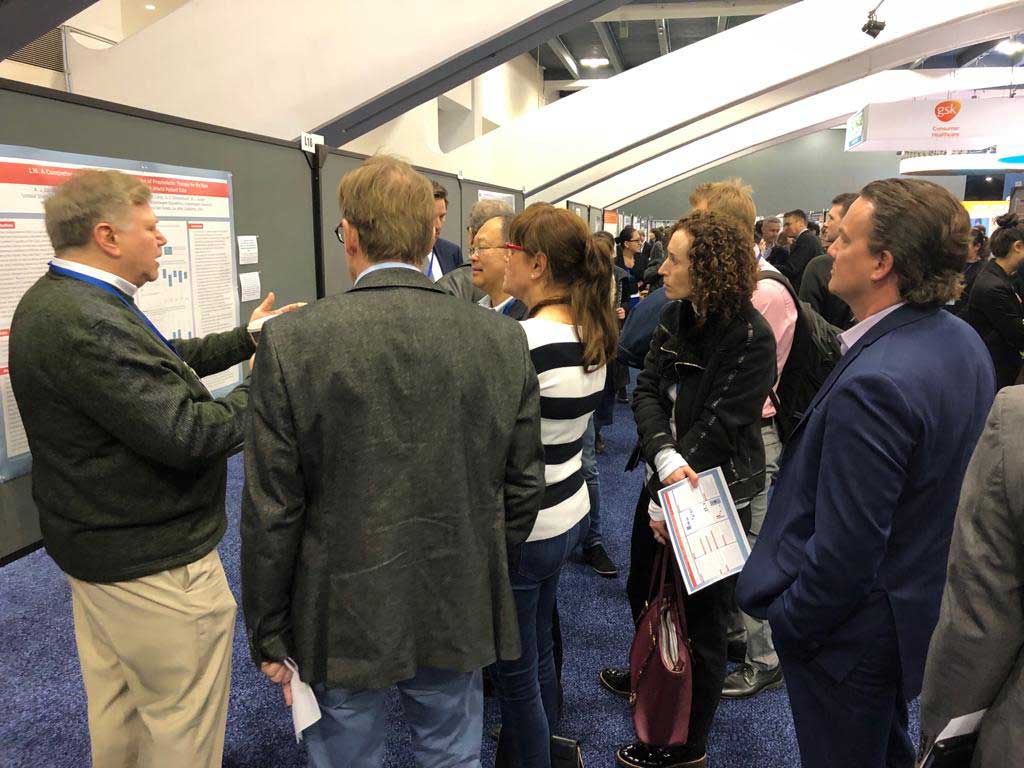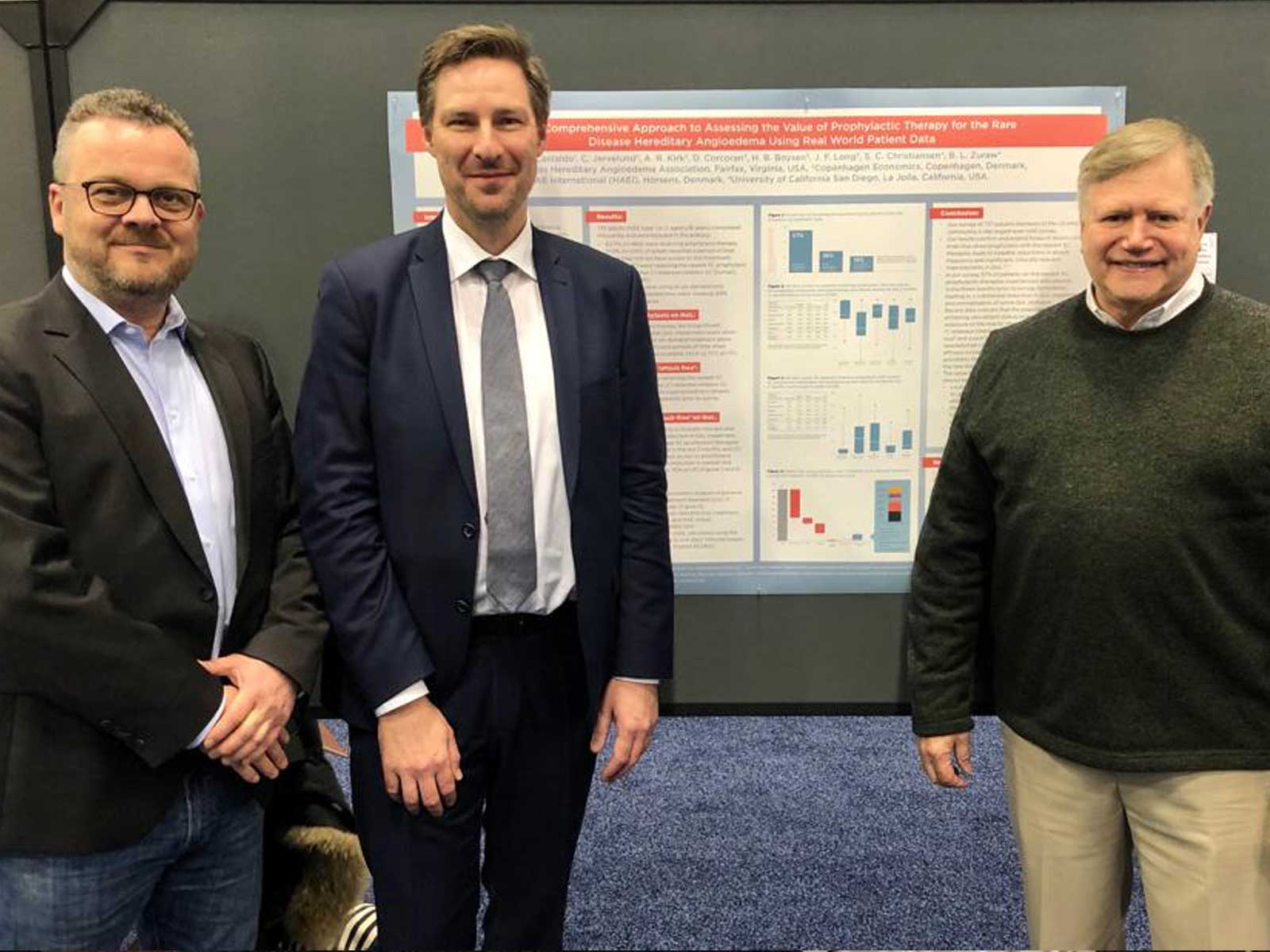A study sponsored by the US HAEA and HAEi assess the value of the new subcutaneous prophylaxis therapies to on-demand only treatment.
The results of the study were presented as a poster at the annual meeting of the American Academy of Allergy, Asthma & Immunology (AAAAI) in San Francisco, USA 22-25 February 2019. The presenters of the poster with the title “A Comprehensive Approach to Assessing the Value of Prophylactic Therapy for the Rare Disease Hereditary Angioedema Using Real World Patient Data” were HAEi President & Chief Executive Officer Anthony J. Castaldo and Executive Vice President & Chief Operating Officer Henrik Balle Boysen.
“The study involved a survey of 737 patient members of the US HAEA community is the largest ever HAE survey. The results confirm and extend those of recent clinical trials that show prophylaxis with the newest subcutaneous therapies leads to sizeable reductions in attack frequency and significant, clinically relevant improvement in the quality of life”, says Anthony J. Castaldo:
“Our data shows that 57 percent of patients on the newest subcutaneous prophylactic therapies experienced zero attacks in the three months prior to survey completion, leading to a substantial reduction in quality of life impairment and normalization of some quality of life domains”.
Recent data indicate that the population of patients achieving zero attack status increases with sustained exposure to the newest subcutaneous therapies. Data from the C1-esterase inhibitor subcutaneous (human) phase 3 open-label trial and a postdoc analysis performed as part of the lanadelumab clinical trial indicate that treatment efficacy increases over time. This suggests the strong possibility that a substantial majority of patients on the new therapies will be attack free.
Further, in the conclusion it says that the value of new subcutaneous prophylactic HAE treatments should be assessed in the context that:
- a substantial majority of patients using the newest subcutaneous prophylaxis therapies are likely to become attack free
- there is potential for remarkable improvement in health outcomes, quality of life and potential socioeconomic gain, and
- the on-demand only treatment model is associated with high direct and indirect costs.
A comprehensive health economics analysis of patients using on-demand only treatment revealed costs of 417,100 USD per patient per year. Direct costs – including on-demand only treatment, emergency room visits, hospital stays, and HAE-linked co-morbidities totalled 364,500 USD while the indirect socioeconomic costs, calculated using the cost of missed work due to sick days, reduced wages, and underemployment, totalled 52,600 USD.












